
The Seneca Falls Convention was the first women's rights convention. It advertised itself as "a convention to discuss the social, civil, and religious condition and rights of woman". Held in the Wesleyan Chapel of the town of Seneca Falls, New York, it spanned two days over July 19–20, 1848. Attracting widespread attention, it was soon followed by other women's rights conventions, including the Rochester Women's Rights Convention in Rochester, New York, two weeks later. In 1850 the first in a series of annual National Women's Rights Conventions met in Worcester, Massachusetts.
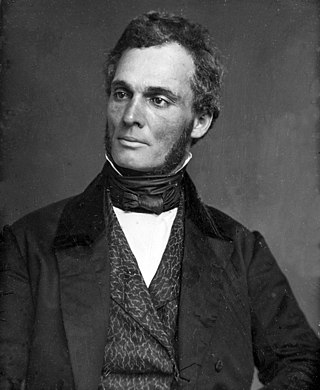
Robert Purvis was an American abolitionist in the United States. He was born in Charleston, South Carolina, and was likely educated at Amherst Academy, a secondary school in Amherst, Massachusetts. He spent most of his life in Philadelphia, Pennsylvania. In 1833 he helped found the American Anti-Slavery Society and the Library Company of Colored People. From 1845 to 1850 he served as president of the Pennsylvania Anti-Slavery Society and also traveled to Britain to gain support for the movement.

Friends Select School (FSS) is a college-preparatory, Quaker school for pre-kindergarten through 12th grade located at 1651 Benjamin Franklin Parkway at the intersection of Cherry and N. 17th Streets in Center City, Philadelphia, Pennsylvania. With Friends (Quaker) education dating to 1689, Friends Select, which was founded in 1833, has been located on this site since 1885. The current building, which includes an office building owned by the school, was built in 1967-69. An adjacent campus building is located across the street at 1700 Race Street. The Race Street Meetinghouse, built in 1856, is used by students and faculty for Meeting for Worship each Wednesday and Thursday. The school is under the joint care of both the Central Philadelphia Monthly Meeting and the Monthly Meeting of Friends of Philadelphia and is governed by a board of trustees comprised equally of the two.

Abigail Hopper Gibbons, née Abigail Hopper was an American abolitionist, schoolteacher, and social welfare activist. She assisted in founding and led several nationally known societies for social reform during and following the Civil War.

Deborah Fisher Wharton (1795–1888) was an American Quaker minister, suffragist, social reformer and proponent of women's rights. She was one of a small group of dedicated Quakers who founded Swarthmore College along with her industrialist son, Joseph Wharton. She was a contemporary and friend of Lucretia Mott and had many of Mott's sympathies but did not actively pursue the women's rights cause, rather she was a proponent of liberal Quaker spirituality.
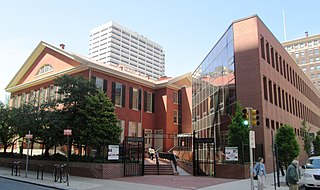
The Race Street Meetinghouse is an historic and still active Quaker meetinghouse at 1515 Cherry Street at the corner of N. 15th Street in the Center City area of Philadelphia, Pennsylvania. The meetinghouse served as the site of the Yearly Meeting of the Hicksite sect of the Religious Society of Friends (Quakers) from 1857 to 1955.

Thomas M'Clintock was an American pharmacist and a leading Quaker organizer for many reforms, including abolishing slavery, achieving women's rights, and modernizing Quakerism.

Lucretia Mott was an American Quaker, abolitionist, women's rights activist, and social reformer. She had formed the idea of reforming the position of women in society when she was amongst the women excluded from the World Anti-Slavery Convention held in London in 1840. In 1848, she was invited by Jane Hunt to a meeting that led to the first public gathering about women's rights, the Seneca Falls Convention, during which the Declaration of Sentiments was written.
Margaret Hope Bacon was an American Quaker historian, author and lecturer. She is primarily known for her biographies and works involving Quaker women’s history and the abolitionist movement. Her most famous book is her biography of Lucretia Mott, Valiant Friend, published in 1980.

Rudolph Blankenburg was an American businessman and manufacturer, who became a politician and elected mayor of Philadelphia, leading a reform administration from 1911 to 1916.

The Mercer Street Friends Center is located at 151 Mercer Street in the Mill Hill neighborhood of the city Trenton in Mercer County, New Jersey. Built in 1858, it was added to the National Register of Historic Places on August 12, 1971, for its significance in architecture, religion, and social history. It was added as a contributing property to the Mill Hill Historic District in 1977. It now houses the main offices of Mercer Street Friends, a Trenton-based Quaker-affiliated social service agency founded in 1958.

The Philadelphia Female Anti-Slavery Society (PFASS) was founded in December 1833 and dissolved in March 1870 following the ratification of the 14th and 15th Amendments to the U.S. Constitution. It was founded by eighteen women, including Mary Ann M'Clintock, Margaretta Forten, her mother Charlotte, and Forten's sisters Sarah and Harriet.

Harriet Forten Purvis was an African-American abolitionist and first generation suffragist. With her mother and sisters, she formed the first biracial women's abolitionist group, the Philadelphia Female Anti-Slavery Society. She hosted anti-slavery events at her home and with her husband Robert Purvis ran an Underground Railroad station. Robert and Harriet also founded the Gilbert Lyceum. She fought against segregation and for the right for blacks to vote after the Civil War.
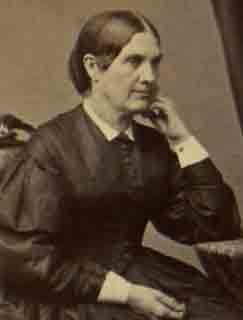
Jane Clothier Hunt or Jane Clothier Master was an American Quaker who hosted the Seneca Falls meeting of Lucretia Mott and Elizabeth Cady Stanton.
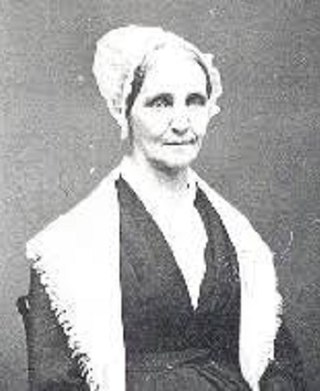
Mary Ann M'Clintock or Mary Ann McClintock (1800–1884) is best known for her role in the formation of the women's suffrage movement, as well as abolitionism.

Lucretia Longshore Blankenburg was an American second-generation suffragist, social activist, civic reformer, and writer. During the period of 1892 until 1908, she served as president of the Pennsylvania Woman Suffrage Association.
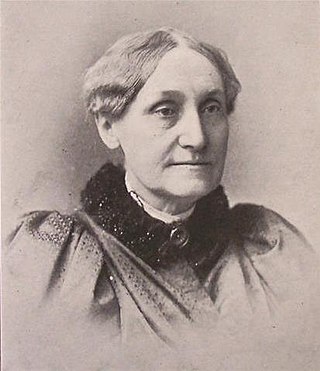
Anna Hallowell was an American education reformer, feminist, anti slavery activist, and welfare worker.
The Progressive Friends, also known as the Congregational Friends and the Friends of Human Progress, was a loose-knit group of dissidents who left the Hicksite branch of the Society of Friends (Quakers) in the mid-nineteenth century. The separation was caused by the determination of some Quakers to participate in the social reform movements of the day despite efforts by leading Quaker bodies to dissuade them from mixing with non-Quakers. These reformers were drawn especially to organizations that opposed slavery, but also to those that campaigned for women's rights. The new organizations were structured according to congregationalist polity, a type of organization that gives a large degree of autonomy to local congregations. They were organized on a local and regional basis without the presence of a national organization. They did not see themselves as creators of a new religious sect but of a reform movement that was open to people of all religious beliefs.
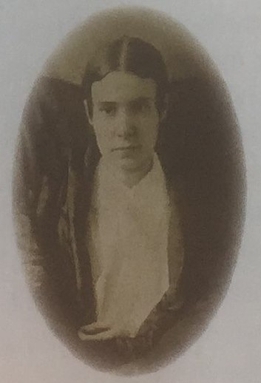
Mary Townsend was an early American science writer and abolitionist. Born into a prominent Philadelphia Quaker family, she, her parents, and her siblings were educated at the Westtown School. From childhood, Townsend had an interest in insects. She conducted various studies and experiments, examining specimens under a microscope and evaluating their habits. Because illness and the loss of her sight kept her confined to her bed, Townsend taught herself how to write with a braille-like card. In 1844, she published Life in the Insect World: or, Conversations upon Insects, between an Aunt and Her Nieces, which became popular and influential, particularly in influencing other women to pursue science.

Mira Sharpless Townsend was a Quaker social activist and reformer in Philadelphia, Pennsylvania. Townsend was the driving force behind the creation of the Rosine Association, which supported destitute women, and was the first organization of its kind run entirely by and for women.
























